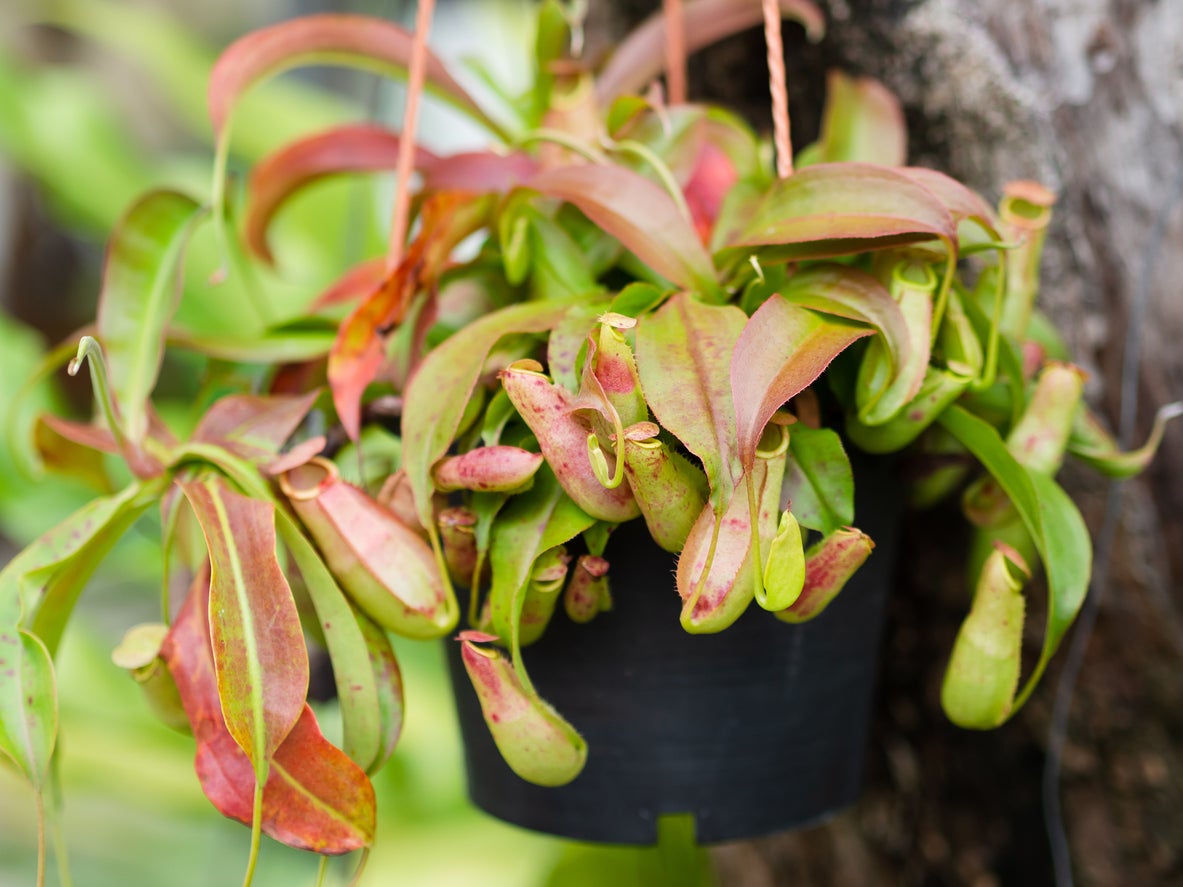Nepenthes Pitcher Plants: Treating A Pitcher Plant With Red Leaves


Nepenthes, often called pitcher plants, are native to tropical regions in South East Asia, India, Madagascar and Australia. They get their common name from the swellings in the mid-veins of the leaves that look like small pitchers. Nepenthes pitcher plants are often grown as houseplants in cooler climates. If you own one, you may see your pitcher plant leaves turning red. There are various possible reasons for a pitcher plant with red leaves; some require fixing, some do not.
Nepenthes Pitcher Plants
Nepenthes pitcher plants use their pitchers to attract insects, not for pollination but for nutrition. Insects are attracted to the pitchers by their nectar secretions and coloration. The rim and inner walls of the leaf swelling are slippery, causing visiting insects to slide into the pitcher. They get trapped in the digestive fluid, and absorbed by the nepenthes pitcher plants for their nutrients.
Pitcher Plant with Red Leaves
The standard color for mature pitcher plant leaves is green. If you see your pitcher plant leaves turning red, it may or may not signal a problem. If the pitcher plant leaves turning red are young leaves, the coloration can be perfectly normal. New leaves often grow in with a distinct reddish tinge. If, on the other hand, you see mature pitcher plant leaves turning red, it can be a cause for concern. You can determine whether a leaf is mature or new by its placement on the vine. Read on for information about fixing a nepenthes with red leaves.
Fixing a Nepenthes with Red Leaves
Too Much Light
Pitcher plants with red leaves can signal “sunburn,” caused by too much light. They generally require bright light, but not too much direct sun. Indoor plants can thrive with plant lights as long as they are broad spectrum and kept sufficiently far away to prevent overheating or scorching. Too much light can cause the leaves facing the light to turn red. Fix this problem by moving the plant farther from the light source.
Too Little Phosphorous
If your pitcher plant leaves become deep red in autumn, it can indicate inadequate phosphorus. Carnivorous nepenthes pitcher plants get phosphorus from the insects they attract and digest. These plants use phosphorus from insect meals to augment the green chlorophyll in its leaves for photosynthesis. A pitcher plant with red leaves may not have consumed enough insects to do this. One solution is to add small insects, like flies, to your mature pitchers.
Sign up for the Gardening Know How newsletter today and receive a free copy of our e-book "How to Grow Delicious Tomatoes".

Teo Spengler is a master gardener and a docent at the San Francisco Botanical Garden, where she hosts public tours. She has studied horticulture and written about nature, trees, plants, and gardening for more than two decades, following a career as an attorney and legal writer. Her extended family includes some 30 houseplants and hundreds of outdoor plants, including 250 trees, which are her main passion. Spengler currently splits her life between San Francisco and the French Basque Country, though she was raised in Alaska, giving her experience of gardening in a range of climates.